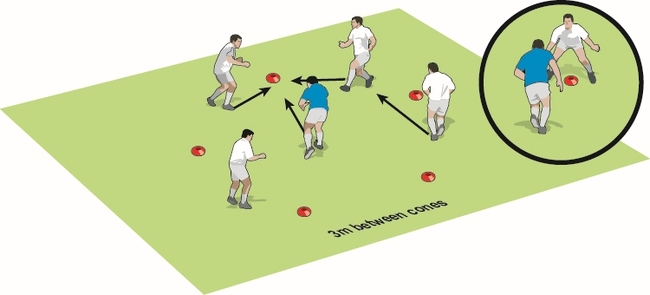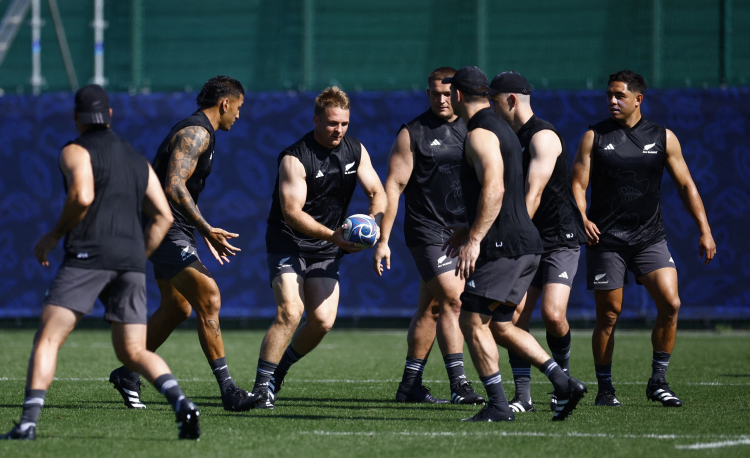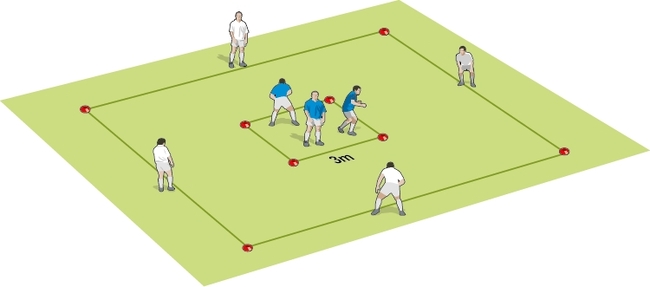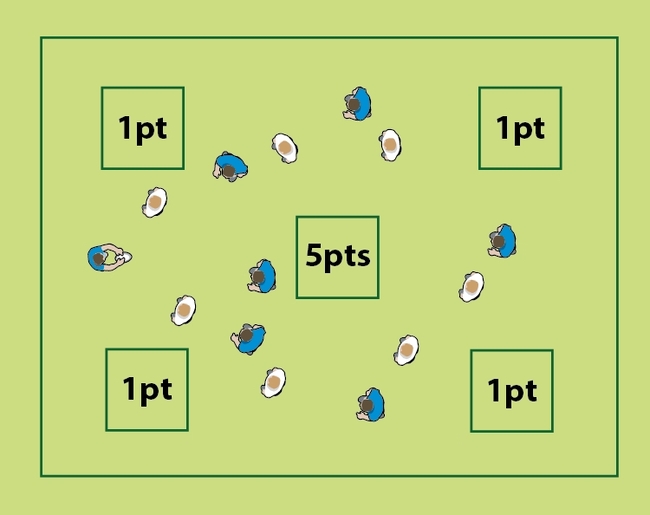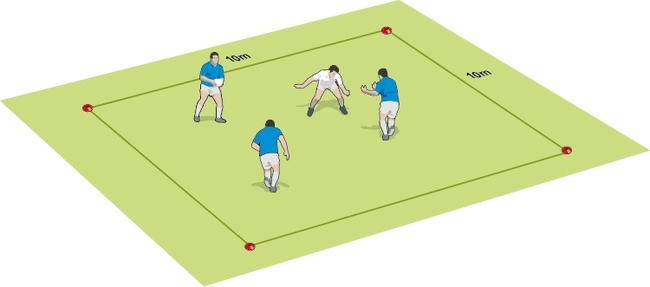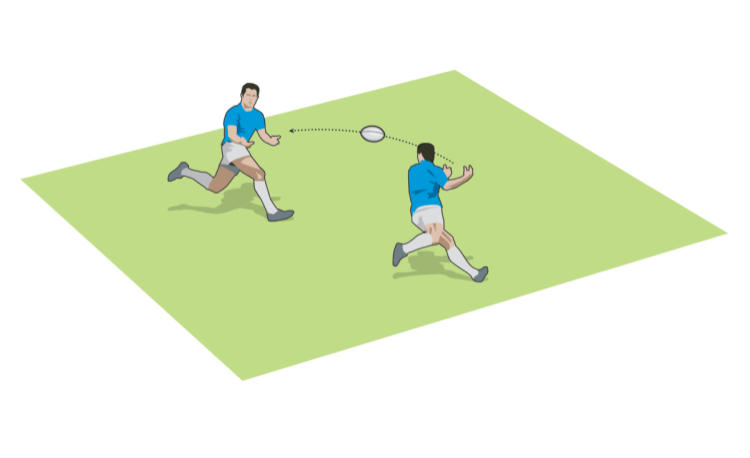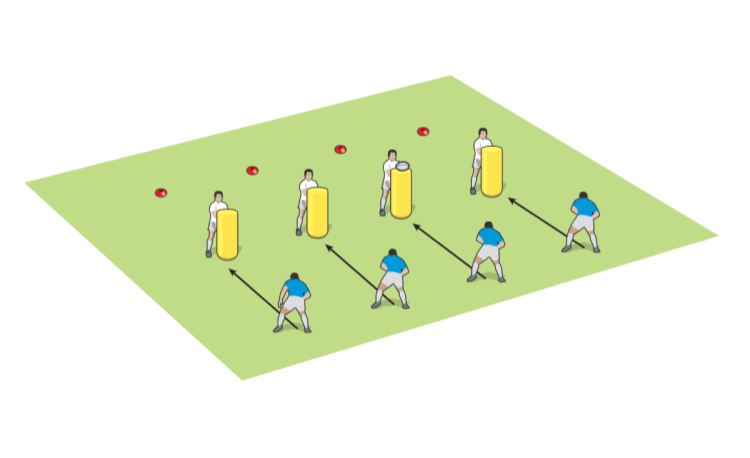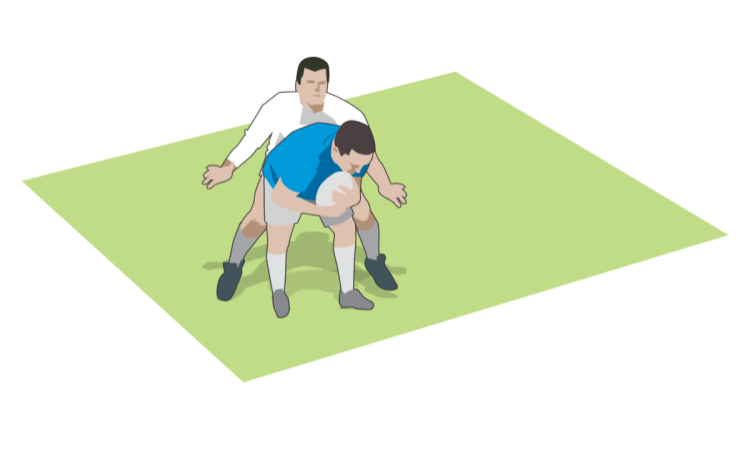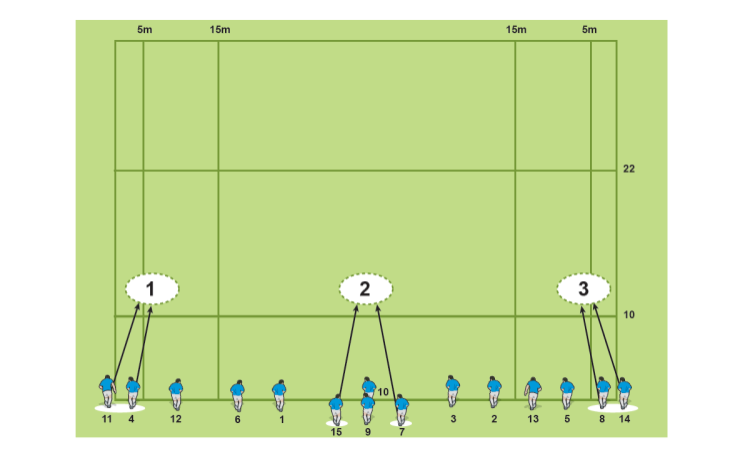You are viewing
1 of your 2 free articles
Warm up with rondos, the grid game, prison break and blockers
Here are four great warm-up games to energise your players while working on skills and decision-making.
Notice that I’m keen to showcase player-led activities for warm-up games. This is a good chance to build more cohesion amongst the players, while you are still providing a certain amount of control on the direction of the session.
Set up and run the game over several weeks before giving over the reins to the players. However, don’t be afraid to step in sometimes to reiterate rules or the reasons for the exercise if you feel the standards are not matching your expectations.
Developed by Harlequins DPP coach, George Ross, Warm-up Rondos are quick to set up and can be player-led if you want. With six variations, they will be a good heart-rate raiser for the session as well as a good breakout exercise.
The grid game from Tom Sheridan can also be used as a breakout exercise. A more developed version of rugby netball, it has challenging ways to increase the pressure on the players.
Prison break can also be player-led and explores footwork skills. Good for younger players who aren’t yet confident with their ball handling.
Blockers: Super-quick footwork and handling warm-up is one of my favourite super-quick set up games. It will create lots of energy as players look for spaces while others try to take that space away.
Newsletter Sign Up
Coaches Testimonials

Gerald Kearney, Downtown Las Vegas Soccer Club

Paul Butler, Florida, USA

Rick Shields, Springboro, USA

Tony Green, Pierrefonds Titans, Quebec, Canada
Subscribe Today
Be a more effective, more successful rugby coach
In a recent survey 89% of subscribers said Rugby Coach Weekly makes them more confident, 91% said Rugby Coach Weekly makes them a more effective coach and 93% said Rugby Coach Weekly makes them more inspired.
Get Weekly Inspiration
All the latest techniques and approaches
Rugby Coach Weekly offers proven and easy to use rugby drills, coaching sessions, practice plans, small-sided games, warm-ups, training tips and advice.
We've been at the cutting edge of rugby coaching since we launched in 2005, creating resources for the grassroots youth coach, following best practice from around the world and insights from the professional game.
